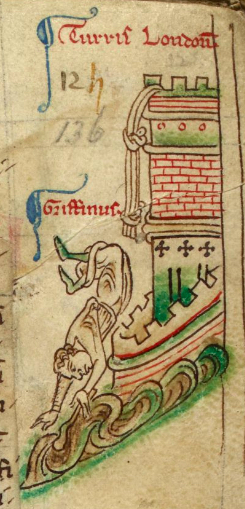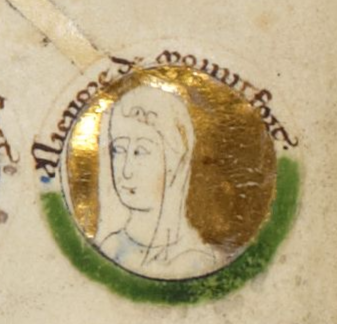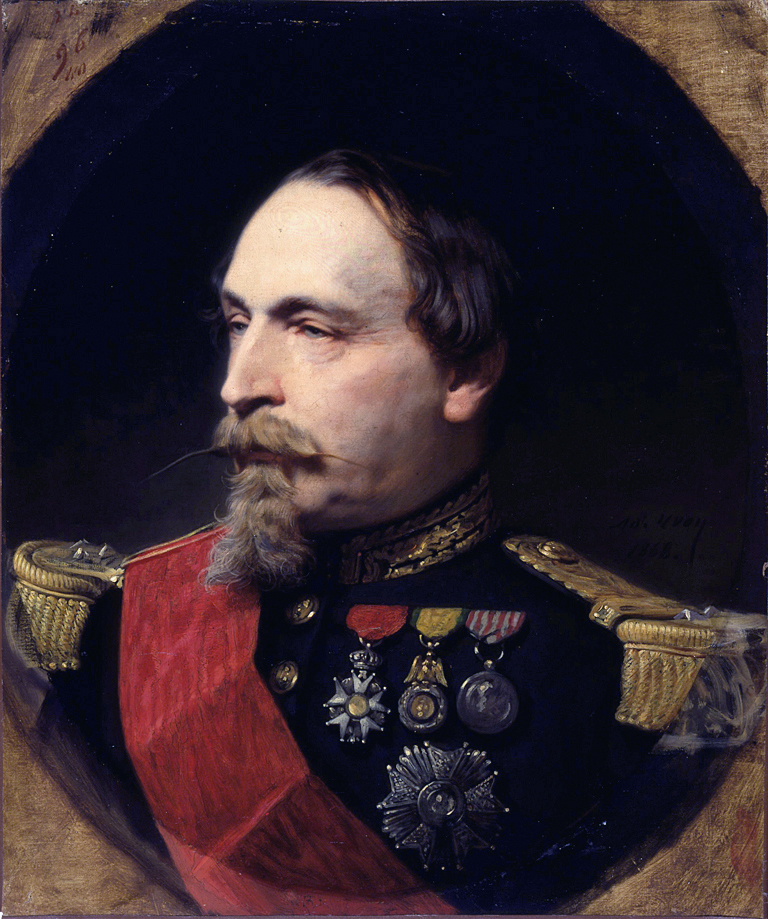© Unofficial Royalty 2024

Anne, Princess Royal and Princess of Orange; Credit – Wikipedia
January 12, 1519 – Death of Maximilian I, Holy Roman Emperor, Archduke of Austria at the Castle of Wels in Wels, Upper Austria, now in Austria; buried at St. George’s Cathedral in Wiener Neustadt Castle in Wiener Neustadt in Lower Austria, now in Austria. As per his will, his heart was placed in the tomb of his first wife Mary, Duchess of Burgundy in the Church of Our Lady in Bruges, County of Flanders, now in Belgium.
Maximilian I reigned as King of the Romans, the de facto leader of the Holy Roman Empire from 1493 – 1508, Holy Roman Emperor from 1508 – 1519, and ruled his family lands as Archduke of Austria from 1493 – 1519. Maximilian married Mary, Duchess of Burgundy in her own right, the only child of Charles I the Bold, Duke of Burgundy, and the couple had three children. It was through the marriage of Maximilian and Mary’s son Philip to Juana I, Queen of Castile and León, Queen of Aragon that the Habsburg lands would be joined with the Spanish lands. Philip and Juana’s son Carlos, best known as Charles V, Holy Roman Emperor, was one of the most powerful ever monarchs and had a large number of titles due to his vast inheritance of the Burgundian, Spanish, and Austrian realms. After Mary’s death in a horseriding accident, Maximilan married two more times but neither marriage produced children. Maximilain suffered a stroke on December 15, 1518, that left him bedridden. However, Maximilian continued to read documents and receive foreign envoys. On January 12, 1519, Maximilian I, Holy Roman Emperor, Archduke of Austria died, aged 59 at the Castle of Wels in Wels, Upper Austria.
Unofficial Royalty: Maximilian I, Holy Roman Emperor, Archduke of Austria
January 12, 1751 – Birth of Ferdinando I, King of the Two Sicilies at the Royal Palace in the Kingdom of Naples, now in Italy
In 1759, upon the death of his childless half-brother King Ferdinand VI of Spain, Ferdinando’s father King Carlos IV of Naples and Sicily succeeded him as King Carlos III of Spain. Because of treaties, Carlos could not be the sovereign of all three kingdoms. His eldest son Felipe was excluded from the succession because of intellectual disability and his second son Carlos was the heir apparent to the Spanish throne. That left the third son Ferdinando to become King of Naples and King of Sicily. In 1768, Ferdinando married Archduchess Maria Carolina of Austria. The couple had 17 children but only seven survived childhood. Four of their five surviving daughters married sovereigns. Ferdinando’s wife Maria Carolina was better educated and more qualified to reign. As part of the marriage contract, Maria Carolina was to have a place on the council of state after the birth of her first son. From 1777 on, Maria Carolina was the de facto ruler of the Kingdoms of Naples and Sicily. Ferdinando was deposed twice: once by the revolutionary Parthenopean Republic for six months in 1799 and again by Napoleon in 1805, before being restored in 1816. In 1820, after riots in Sicily, Ferdinando Ferdinando was forced to sign a constitution and appoint his son Francesco as regent of Sicily. This only lasted until 1821, when Austrian troops friendly to Ferdinando occupied Naples.
Unofficial Royalty: Ferdinando I, King of the Two Sicilies
January 12, 1759 – Death of Anne, Princess Royal, Princess of Orange, daughter of King George II of Great Britain and wife of Willem IV, Prince of Orange, at The Hague, the Netherlands; buried at Nieuwe Kerk in Delft, the Netherlands
In 1734, Anne married Willem IV, Prince of Orange and they had two surviving children. The Dutch Royal Family is descended from Anne. When Willem IV died at age 40 from a stroke in 1751, he was succeeded by his three-year-old son as Willem V with Anne serving as Regent. As Regent, Anne was given all the powers normally given a hereditary Stadtholder of the Netherlands, with the exception of the military duties of the office, which was entrusted to Ludwig Ernst of Brunswick-Lüneburg. Anne acted as Regent until her death from dropsy in 1759, at age 49.
Unofficial Royalty: Anne, Princess Royal, Princess of Orange
January 12, 1810 – Birth of Ferdinando II, King of the Two Sicilies in Palermo, Kingdom of Sicily, now in Italy
Full name: Ferdinando Carlo Maria
Twenty-year-old Ferdinando II succeeded to the throne of the Two Sicilies upon the death of his father Francesco I, King of the Two Sicilies in 1830. In 1832, Ferdinando married Maria Cristina of Savoy, the daughter of Vittorio Emanuele I, King of Sardinia. In 1836, five days after giving birth to her only child, 23-year-old Maria Cristina died from childbirth complications. Maria Cristina had been called “the Holy Queen” for her deep religious devotion. She was constantly ill which she patiently endured with her piety and was popular with the people for her charity, modesty, and humility. In 2014, at the Basilica of Santa Chiara where she is buried, Maria Cristina was beatified and is known as Blessed Maria Cristina of Savoy and is one step away from canonization as a saint. In 1837, Ferdinando married Maria Theresa of Austria and they had twelve children. The Revolutions of 1848 reached the Kingdom of the Two Sicilies and Ferdinando II was forced to grant a constitution to the Kingdom of the Two Sicilies. The goodwill created by the constitution did not last long. Between 1849 and 1851, Ferdinando returned to repressive policies causing many who opposed him to go into exile. An estimated 2,000 suspected revolutionaries or dissidents were jailed. Because of this, in 1856, Ferdinando was the victim of an assassination attempt.
Unofficial Royalty: Ferdinando II, King of the Two Sicilies
January 12, 1855 – Death of Maria Theresa of Austria, Queen of Sardinia, wife of Carlo Alberto I, King of Sardinia in Turin, Kingdom of Sardinia, now in Italy; buried at the Basilica of Superga in Turin
Maria Theresa was the daughter of Ferdinando III, Grand Duke of Tuscany and his first wife Princess Luisa of Naples and Sicily. In 1817, she married the future Carlo Alberto I, King of Sardinia. They had three children including Vittorio Emanuele II, King of Sardinia, later King of Italy, who became the first king of a united Italy. Maria Theresa’s husband became King of Sardinia in 1831. In 1848, Carlo Alberto attempted to rid the Italian peninsula of Austrian-ruled and supported states resulting in the First Italian War of Independence, part of the Italian Unification. After his forces were defeated by the Austrian forces, Carlo Alberto immediately abdicated in favor of his son Vittorio Emanuele and went into exile in Portugal. However, he became seriously ill during the trip and died soon after reaching his destination. After the death of her husband, Maria Theresa no longer appeared in public. However, she was a great influence on her son Vittorio Emanuele II, King of Sardinia. Her son became a driving force behind the Italian unification movement along with Giuseppe Garibaldi, a general and nationalist, and Giuseppe Mazzini, a politician and journalist. However, Maria Theresa did not live long enough to see her son become King of a united Italy. On January 12, 1855, in Turin, Maria Theresa died at the age of 53.
Unofficial Royalty: Maria Theresa of Austria, Queen of Sardinia
January 12, 1974 – Death of Lady Patricia Ramsay, born Princess Patricia of Connaught, granddaughter of Queen Victoria, at her home Ribsden Holt in Windlesham, Surrey, England; buried at the Royal Burial Grounds at Frogmore in Windsor, England
Princess Patricia, known as Patsy in the family, was the daughter of Prince Arthur, Duke of Connaught and Princess Louise Margaret of Prussia. Upon her marriage to Sir Alexander Ramsay, she voluntarily relinquished the style of Royal Highness and the title of Princess of Great Britain and Ireland and assumed the style of Lady Patricia Ramsay. Lady Patricia and her husband had one son. She remained a member of the British Royal Family, remained in the line of succession, and attended all major royal events including weddings, funerals, and coronations. At the age of 91, Alexander Ramsay died and fourteen months later, Lady Patricia died at the age of 87.
Unofficial Royalty: Princess Patricia of Connaught, Lady Patricia Ramsay
This article is the intellectual property of Unofficial Royalty and is NOT TO BE COPIED, EDITED, OR POSTED IN ANY FORM ON ANOTHER WEBSITE under any circumstances. It is permissible to use a link that directs to Unofficial Royalty.










